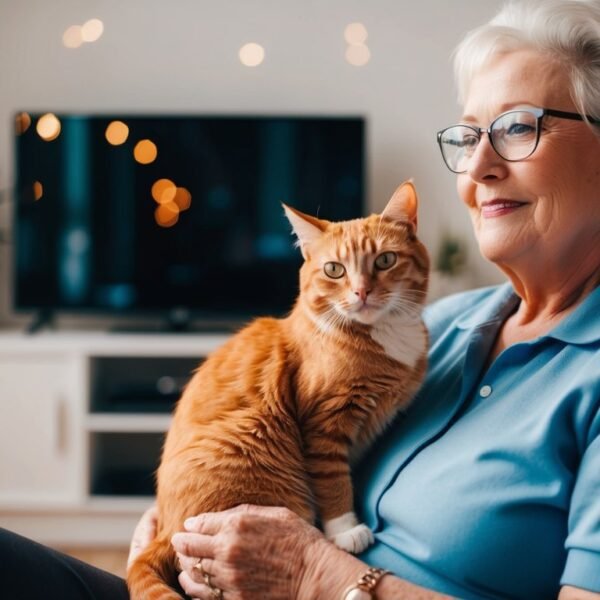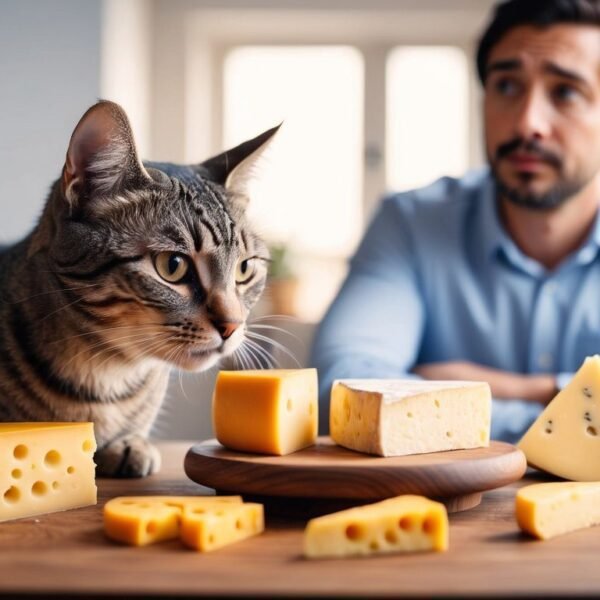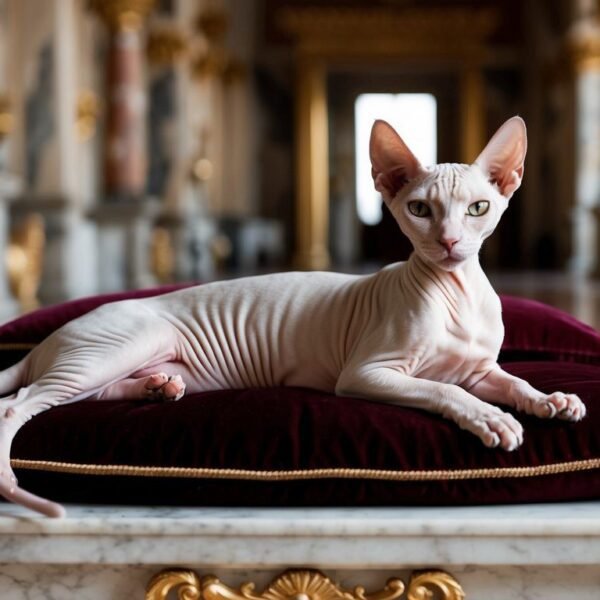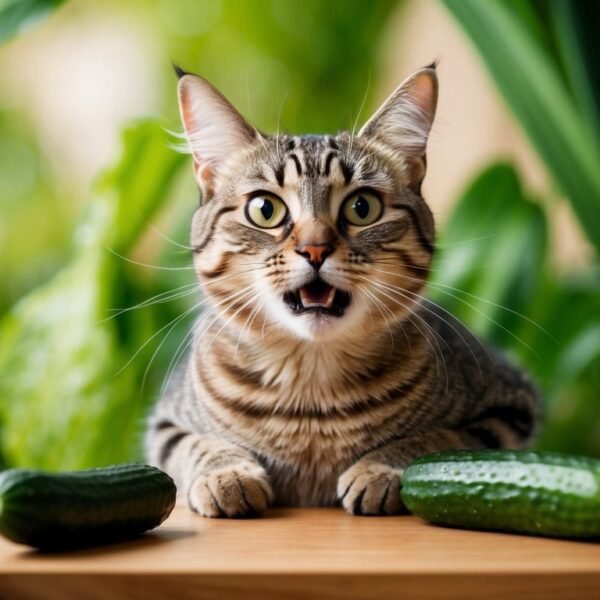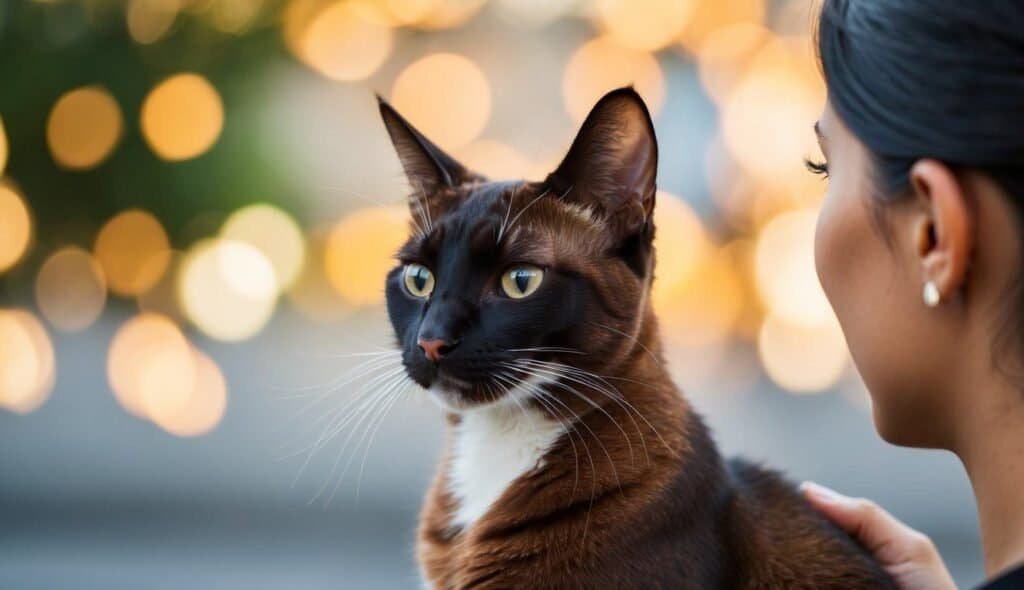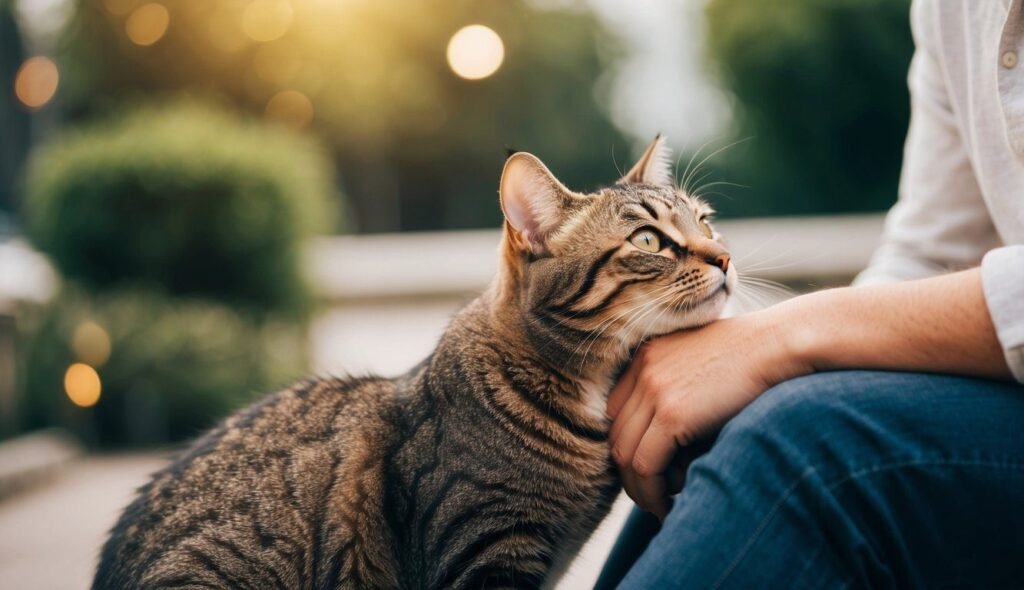Have you ever watched your feline friend press their paws rhythmically on a soft surface and wondered, why do cats knead? This adorable behaviour is called kneading, and it’s a common sight for cat owners. You might wonder why your furry mate does this cute little dance.

Cats knead for various reasons, including comfort, affection, and marking their territory. This instinctive action starts when they’re kittens, as they push against their mum’s tummy to encourage milk flow. As adult cats, they often continue this behaviour when they’re feeling happy and relaxed.
When your cat kneads you or your belongings, it’s actually a sign of trust and contentment. It’s their way of showing love and creating a cosy spot to rest. Some cats even purr while they knead, adding to the charm of this endearing cat behaviour. So next time your kitty starts their kneading routine, know that it’s a compliment to you and your home!
The Instinctual Roots of Kneading

Cat kneading has deep roots in feline nature. This behaviour starts early in a cat’s life and carries on as they grow older.
From Kittenhood to Adulthood
Kneading originates in kittenhood when little ones press their paws against mum’s belly. This cute action helps them get milk and stay close to their mother. As kittens grow up, they keep this habit even when they don’t need milk anymore.
You might see your adult cat kneading soft things like blankets or your lap. This shows they feel safe and happy, just like when they were babies. Kneading can also help cats mark their spot with scent from their paw pads.
Nursing Behaviour and Its Evolution
The link between kneading and nursing is strong. When kittens knead, it tells their mum’s body to keep making milk. This clever trick helped wild cats survive long ago.
Today’s house cats still have this old instinct. Even though they don’t need it for milk, kneading helps them feel good. It’s like a comfy reminder of being little and safe with mum.
Some cats even suck on blankets while kneading, acting out nursing moves from their kitty days. This shows how deep the kneading habit goes in a cat’s mind.
Kneading as a Sign of Affection and Comfort
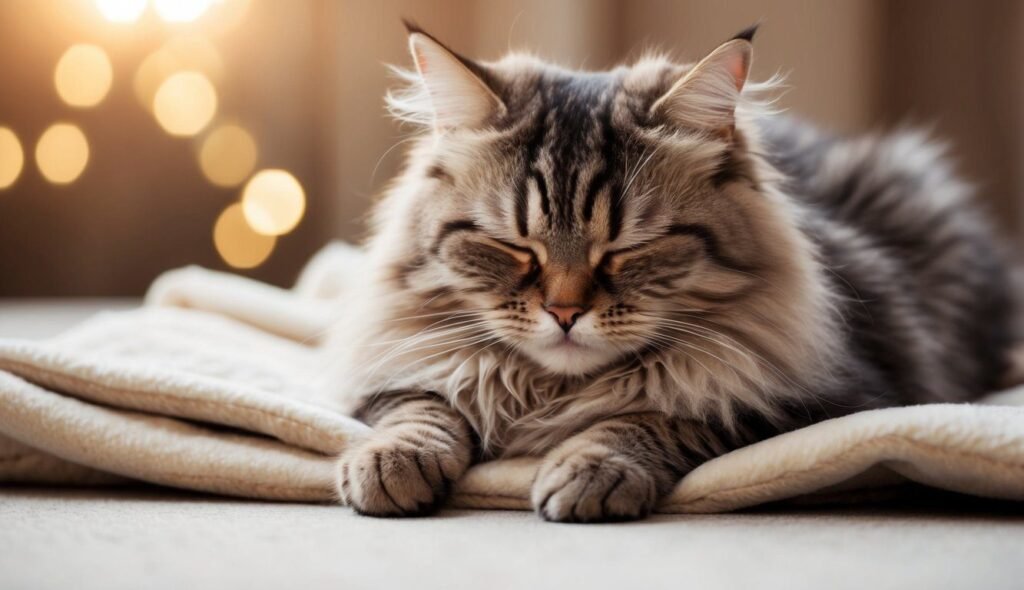
When your cat kneads, it’s often a warm display of love and contentment. This behavior shows your kitty feels safe and happy in your presence.
Bonding with Humans and Other Cats
Cats knead to show affection and strengthen bonds. When your furry mate climbs onto your lap and starts kneading, it’s a clear sign they feel cozy and secure with you. This action reminds them of nursing as kittens, bringing back feelings of comfort.
Kneading isn’t just for humans. Cats also use this behaviour to connect with other feline friends. It’s their way of saying “I like you” in cat language.
Some ways cats knead to show affection:
- Gentle paw pushes on your legs
- Kneading while purring loudly
- Making biscuits on their favourite blanket
Oxytocin and Emotional Wellbeing
Kneading can boost your cat’s happiness by releasing oxytocin, often called the “love hormone”. This chemical helps your kitty feel good and strengthens your bond.
When your cat kneads, it’s not just comforting for them – it can make you feel good too! The rhythmic motion and soft purring can be quite soothing.
Benefits of kneading for cats:
- Reduces stress and anxiety
- Promotes relaxation
- Enhances emotional connection with owners
So next time your cat starts kneading, remember it’s their special way of showing how much they care about you.
Territorial Marking and Mating Behaviour
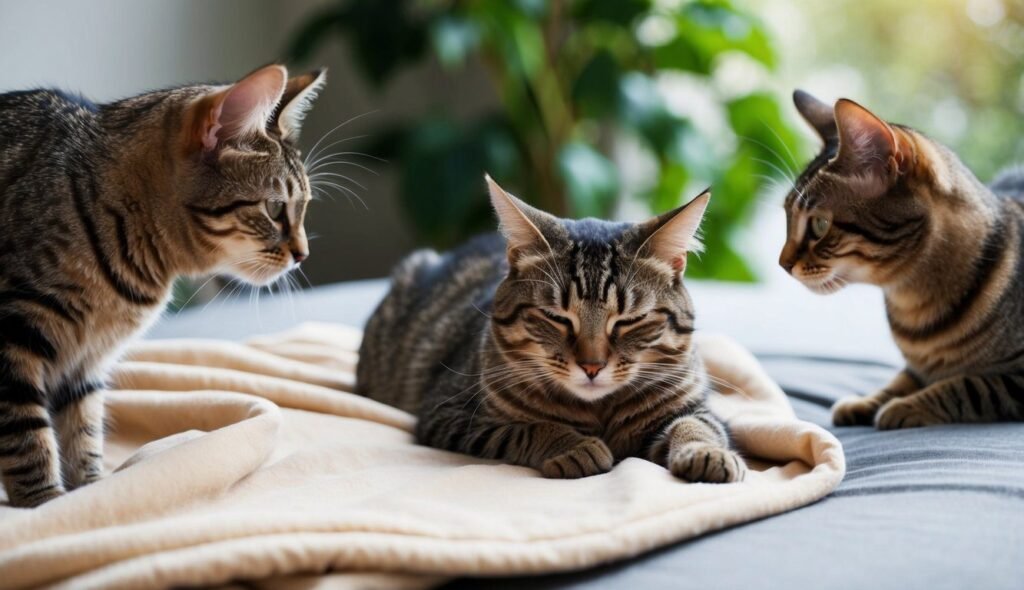
Cats use kneading as part of their territorial and mating behaviours. This action helps them leave their scent and communicate with other cats.
Scent Glands and Territory
Your cat’s paws have special scent glands that release pheromones when they knead. These unique scents help cats mark their territory. When your furry friend kneads your lap or a soft blanket, they’re actually claiming it as their own.
Kneading isn’t the only way cats mark their space. They also use:
- Scratching posts
- Rubbing against objects
- Spraying urine (mostly in unneutered cats)
The scent left behind tells other cats important info about who lives there. It’s like leaving a kitty calling card!
Displays in Mating Contexts
During mating season, you might notice your cat kneading more often. This is especially true for female cats. When a female is ready to mate, she may:
- Knead the ground more frequently
- Purr loudly while kneading
- Roll around and stretch
These behaviours are part of their mating ritual. Male cats might also knead to show they’re interested in a female. It’s their way of saying, “Hey, I’m here and ready to start a family!”
Kneading in this context is a leftover behaviour from kittenhood. It mimics the motion kittens use to stimulate milk flow from their mum. In adult cats, it becomes a comforting action linked to feeling content and secure.
Physical Benefits of Kneading
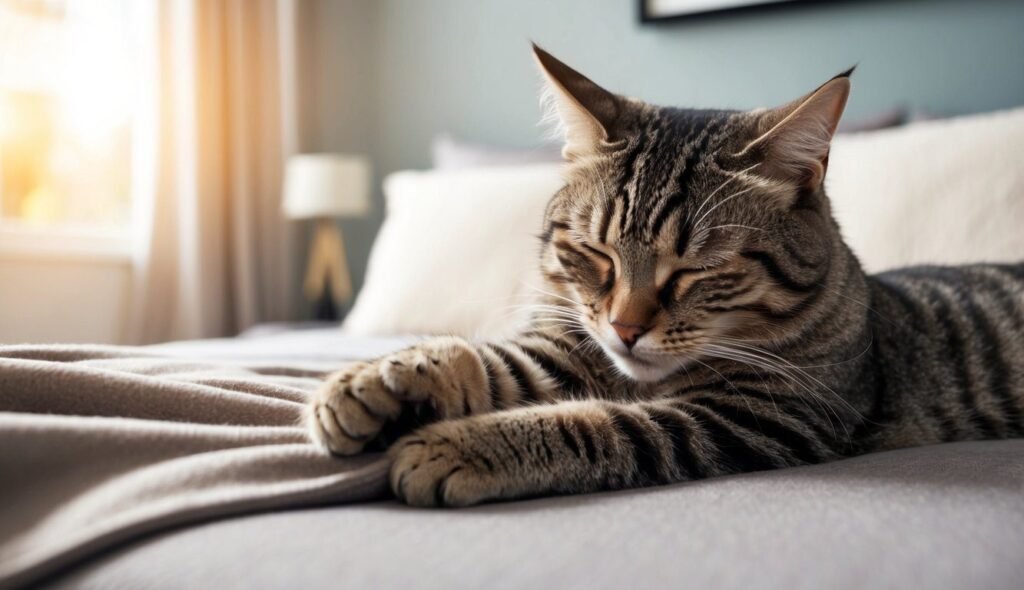
When your cat kneads, it’s not just a cute behaviour. This action actually provides several physical benefits for your feline friend.
Muscle Stretching and Flexibility
Kneading helps your cat keep its muscles in top shape. As your kitty pushes its paws in and out, it’s giving its limbs a good stretch. This movement works the muscles in their legs and paws, keeping them flexible and strong.
Think of it as a kitty workout! Regular kneading can help your cat stay agile, which is especially important for adult cats who might not be as active as they once were. It’s like yoga for cats – stretching those muscles can improve their overall mobility and help prevent stiffness.
Kneading also boosts blood flow. As your cat pushes and pulls, it gets the blood moving through its body, which is great for their health.
Claw Health and Kneading
“Making biscuits” isn’t just fun for your cat – it’s good for their claws too! When your cat kneads, it’s actually helping to keep its claws in good nick.
This action helps remove the outer layer of the claw, keeping them sharp and healthy. It’s a bit like how you might file your nails. For cats in the wild, this would help keep their claws ready for climbing and hunting.
Kneading also gives your cat a chance to mark its territory. Cats have scent glands in their paw pads, so when they knead, they’re leaving their scent behind. It’s their way of saying “this spot is mine!”
If your cat kneads you, take it as a compliment! It’s a sign they feel safe and happy with you. Just make sure to trim their claws regularly to avoid any accidental scratches during these affectionate moments.
Kneading on Different Surfaces
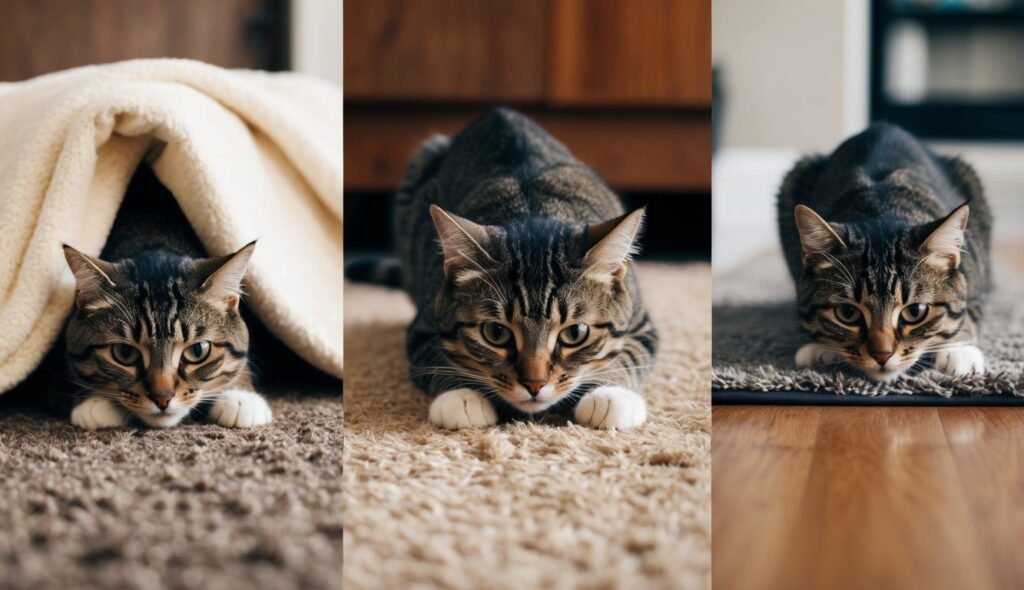
Cats love to knead on various surfaces, each offering unique textures and comfort levels. Your feline friend might have specific preferences when it comes to their kneading spots.
Preference for Soft Textures
Cats often prefer soft surfaces for kneading, like blankets, pillows, or your lap. These cosy textures remind them of their mum’s soft fur, triggering happy memories from kittenhood. When your cat kneads on soft items, they’re seeking comfort and warmth.
You might notice your cat making biscuits (another term for kneading) on:
- Fluffy rugs
- Plush cushions
- Fuzzy jumpers
This behaviour helps your cat feel safe and relaxed. It’s a sign they’re content in their environment.
Creating Comfortable Resting Areas
Cats use kneading to make their resting spots more comfy. They’ll often knead before settling down for a nap, creating a cosy nest.
You can help your cat by:
- Providing soft blankets in their favourite spots
- Placing cushions in sunny areas
- Offering a cat bed with a plush lining
When cats knead on these surfaces, they’re not just getting comfy. They’re also marking their territory with scent glands in their paws. This helps them feel secure in their space.
Remember, each cat is unique. Your furry mate might prefer kneading on firmer surfaces too. Pay attention to their habits and provide a mix of textures for them to enjoy.
Frequently Asked Questions
Why do kitties press on your lap?
Cats knead on your lap to show affection. This comforting behaviour reminds them of nursing as kittens. When your cat presses on you, it’s a sign they feel safe and content.
What’s the reason behind cats pressing on blankets?
Cats press on blankets to create a cosy spot for napping. They’re fluffing up their sleeping area, just like you might adjust your pillows before bed. This instinct comes from their wild ancestors who would pat down grass to make a comfy nest.
Do tomcats also engage in pressing behaviour?
Yes, both male and female cats knead. It’s not linked to gender but rather to individual personality and comfort levels. Some cats knead more than others, regardless of whether they’re tomcats or not.
Can you tell me why my cat presses and purrs at the same time?
When your cat kneads and purrs together, they’re in a state of bliss. The combination of these behaviours shows they’re feeling extremely happy and relaxed in your company.
What does it signify when your moggy presses on you?
Your cat pressing on you is a sign of trust and bonding. They’re marking you with their scent from the glands in their paws, claiming you as part of their family. It’s a compliment, really!
Is pressing a sign of a cat being cheery?
Yes, kneading is often a sign of a content cat. However, some cats may knead when they’re seeking attention or feeling anxious. Pay attention to your cat’s other body language to understand their mood fully.
Join the Mad About Meow Family!
Get your paws on exclusive tips, adorable cat stories, and the latest feline-friendly finds. Don’t miss a whisker of the action—subscribe now and stay in the loop with all things cat-tastic!

